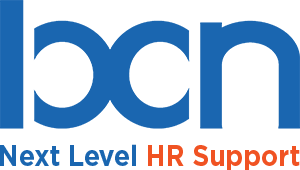HR software is pivotal to the success and overall flow of workforce management. At the very least, the HR solution that you implement should make it easier for you to decrease the number of errors made by human hands while simplifying compliance and increasing productivity. If this isn’t happening, you may need a better solution. Below are three signs it may be time for you to upgrade as well as a look into the business solutions that BCN Services can offer for your organization.
1. Your head count is growing but the software isn’t scalable
If your business is currently expanding, it is highly likely that you’ll need to hire more people and expand your team to accommodate the expansion of your business. However, the more employees you have, the more complex your HR needs will become.
The following aspects of your business will most definitely become more complicated as you increase the number of people your business employs:
- Absence management.
- Benefits administration.
- Compensation management.
- Employee development.
- Employee discipline.
- Employee engagement.
- Employee retention.
- Employee training.
- Health and safety.
- Leave administration.
- Onboarding.
- Payroll.
- Performance management.
- Recordkeeping.
- Applicant tracking.
If the HR software you currently use is not scalable, then it won’t be capable of managing the aforementioned activities, which can lead to frustration among your HR team not to mention higher rates of employee turnover as well as penalties stemming from compliance-related mistakes.
2. No employee or manager self-service
The HR software you implement as part of your business needs to allow employees to perform certain HR-related tasks on their own. Ultimately, at a bare minimum, your employees should be able to perform the following tasks with the help of the HR software they use at work:
- Complete their tax withholding forms and make necessary adjustments over time.
- Enroll in benefits and update their information if or when it changes.
- Make changes to their personal information.
- Review their payroll data.
- Submit direct deposit changes.
- Submit paid time off requests.
- View their work schedules.
If your HR software does not offer these options for employees, then the HR team will have to pick up where the HR software leaves off, which can be draining and overwhelming for your HR department, among other unfavorable outcomes. Your HR employees will have to then allocate a lot of their time toward activities that the HR software should allow the employees to do on their own.
While it is a wise idea to have self-service opportunities available to employees, it’s even better if managers have access to self-service tools as well. Here are a number of examples of self-service tools that are worth offering to managers of any business:
- Employee leave.
- Employment status changes.
- Events, such as birthdays, anniversaries and performance reviews.
- Reporting, such as labor expense and PTO balance reports.
- Scheduling.
- Time and attendance.
Not only do self-service tools for employees and managers alike save time for the HR department, these resources vastly reduce paper clutter as well, which contributes to the economic and environmental friendliness that digital tools create. For these reasons and many others, HR department tools are a win-win all around.
3. Your HR software isn’t cutting it
There are two main types of HR software — on-premises software and cloud-based software, the latter of which is also known as software as a service. It’s important to select the option that is most fitting for your business, but how do you know which one that will be?
It all starts with learning more about the two available options. For instance, with an on-premises solution, the HR system is installed directly onto your in-house servers. The on-premises system is highly customizable, which provides you with more control overall, even when it comes to managing your data security. On the other hand, the on-premises system can be time consuming to implement as well as expensive to maintain.
Alternatively, with cloud-based software or a SaaS solution, the HR application is ultimately hosted on the cloud, meaning it’s far less invasive than an on-premises solution. A cloud-based software solution does not require a lengthy implementation period either, meaning the HR team can get started with the new software almost immediately. Furthermore, fewer resources are required with the SaaS solution due to the fact that the provider deals with all things concerning system support and maintenance.
At BCN, we understand both the on premise and cloud environment. As a supporter of our industry standard PEO Defender protocol, and with an always emerging company level Digital Event Response Protocol, our ongoing efforts at BCN are to support extremely short failovers that protect your data, even in the event of a major internet failure or an unexpected attack of any kind from around the world.
While the cloud-based solution sounds far easier to implement and utilize, it is important to be aware of the fact that data security might become a concern due to the fact that the employer’s information is stored on the SaaS provider’s servers. Additionally, SaaS is based entirely off of the internet, so if access to the internet is interrupted for any reason, your access to the software will be denied until internet access is restored.
All in all, the type of HR software that a business implements can either make or break an employer in a number of ways, including in terms of compliance. That said, if your HR solution is no longer serving your business needs or improving operations as a whole, do not hesitate to upgrade at your earliest convenience and contact our team of HR experts at https://info.bcnservices.com/nextlevel.
© Copyright 2022, BCN Services. All Rights Reserved. This content is available for informational purposes only. BCN Services is not rendering legal advice or service. If you would like to have a discussion regarding this HR related topic, contact our team today at https://info.bcnservices.com/nextlevel.

